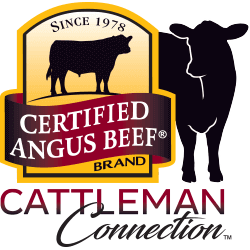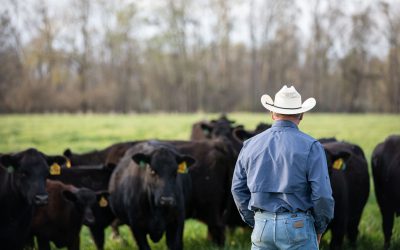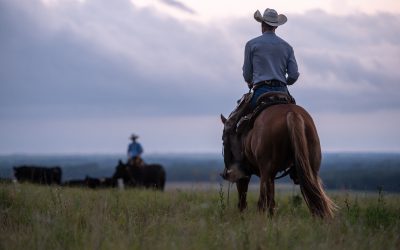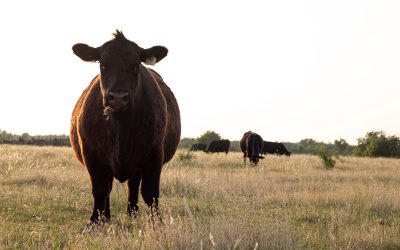
Nice to Meat Ya: Josh Comninellis

“I’m honored to have the opportunity to get an idea, a taste, of what they do,” he says. “I’m inspired by their attitude, work ethics and ideals, and I’m constantly taking away things that I want to apply in my own life.”
The first time Josh walked through the doors of the Association headquarters in St. Joseph, Mo., he was unemployed, soon-to-be married and knew nothing about agriculture.
“Everything I know now is new,” Josh says. Working part-time while earning his degree at Missouri Western State University, he joined the staff full-time earlier this year.
Jo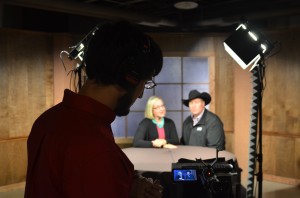
But he’s also had the chance to shape some broader philosophies on food.
“Where I grew up, it was just a given that large-scale food production is bad, and we took for granted how our food was raised and who did it,” Josh says. “Now I see people who work very hard.”
Whether he’s on-location, shooting producer interviews or listening to their stories while editing, Josh said he’s using his time and talents right where he was meant to.
“Now I’m so much more fascinated by capturing real people’s stories,” he says. Those that show up on “I Am Angus” and in other breed productions are “so beyond anything we ever made up in school.”
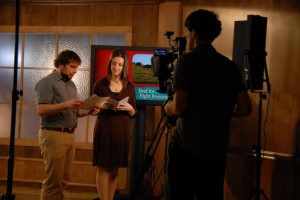
“Everybody does whatever is necessary,” he says of the team that has grown since he first started. Then the majority of the small staff shared one computer and produced video out of an old darkroom-turned office space.
“It was basically a closet,” he says. Now, they have a basement studio, office space and many more people to keep the show going. Of course, someone washing dishes upstairs can halt production downstairs where the water pipes run right by, just as a Harley zooming past or an ill-timed lawn mowing near the basement windows can do the same.
“We have some unique challenges,” he says. But the allure of CNN or FOX isn’t calling Josh away from the breed and job he’s grown to love.
Cattle videography and producer interviews isn’t exactly what Josh had in mind when he got his first camcorder and desktop publishing software in 9th grade, but sometimes things work out in ways we could never imagine.
May your bottom line be filled with black ink,
Miranda
PS–Catch up on this whole series with these links:
- Day 1: Ashley Pado
- Day 2: Scott Redden
- Day 3: Jesse Stucky
- Day 4: Bridget Wasser
- Day 5: Amanda Barstow
- Day 6: Josh Moore
- Day 7: Ruth Ammon
- Day 8: Bill Tackett
- Day 9: Dan Chase
- Day 10: Danielle Foster
- Day 11: Eric Mihaly
- Day 12: Jennifer Kiko
- Day 13: Mark Morgan
- Day 14: Meg and Matt Groves
- Day 15: Rod Kamph
- Day 16: Jonnie Schreffler
- Day 17: Brent Eichar
- Day 18: Alberto Diaz
- Day 19: Larry Kuehn
- Day 20: Bob Boliantz
- Day 21: David Livingston
- Day 22: Danny Harris
- Day 23: Tony Biggs
- Day 24: George Falb
- Day 25: Liz Wunderlich
You may also like
Progress from small steps
Every day is a chance to learn and get better. Thousands of others like my new friends in Alabama are taking steps to meet the shifts in consumer demand, and to know more. Small steps in the right direction can start now. Even if it’s just recording a snapshot of where you are today, a benchmark for tomorrow.
Not perfect, but working to get better
The CAB Cattleman Connection team heard its name called more than once in the virtual ceremonies, and each time came a sense of personal accomplishment, but even better: confirmation that we’re getting better at our craft. I hope that means we’re doing a better job for you.
Beefed up findings
Frank Mitloehner presents his findings on the animal ag sector’s impact on global warming. He explains how cattle counterbalance other fossil fuel sectors, proving that cattle are a solution and not a threat.
